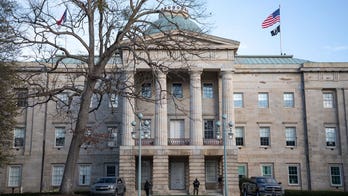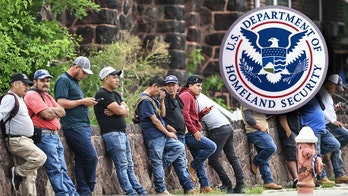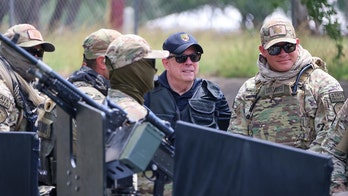The Great Plains of northern Montana once again have wild American buffalo roaming their vast expanse.
Nearly hunted to extinction in the 1880s, genetically pure bison now number in the few thousands -- and for the first time, several dozen have been handed over to Native Americans who relied on American buffalo for thousands of years.
"This is the most significant development in many, many generations," said Stoney Anketell, who sits on the Assiniboine and Sioux Tribal Board. "When I think of my ancestors, they would be so pleased this occurred, it's finally a reversal of fortune for the Indian people."
Yet the tribes are now in the middle of a culture clash over the animal.
After the 61 pure bison were relocated from Yellowstone National Park to the Fort Peck Indian Reservation in northeastern Montana, the Native Americans who received them -- along with conservationists -- have found themselves pitted against ranchers and farmers.
One people's treasured beast is another's nuisance.
"They want everything," fourth generation rancher Dustin Hofeldt said. "All the fences gone, all the cattle out of here -- they just want this to be a giant game refuge."
Hofeldt is one of many plaintiffs who successfully sued to block future bison relocations.
He is no stranger to bison problems. In 2005, he shot and killed five in a single day after they had escaped from a neighboring reservation and were harassing his cattle. Last year, he claims bison broke his fencing and ate his hay, costing him $20,000.
Montana Gov. Brian Schweitzer said Hofeldt and the other opponents are being irrational.
"In a hundred years, this herd will still only grow to a few thousand, and we have 3 million cattle in Montana," Schweitzer said. "I think there's room for them to coexist."
The bison population has been growing in Montana and elsewhere for decades, but nearly all of the buffalo are bred with cattle and raised as livestock for their meat. The tribes and well-financed conservation groups view the genetically pure, wild bison as significantly more important. The American Prairie Foundation has been buying up land from ranchers in hopes of one day owning a 3-and-a-half-million-acre wildlife reserve.
"Where does it stop?" asked attorney Cory Swanson, who is representing the bison opponents. "How widely are the buffalo going to spread, how much damage are they going to cause and where will our interests be protected?"
Swanson worries that bison, which are currently classified as livestock in Montana, will be considered protected wildlife. That would severely limit what ranchers could do when bison escape containment.
Schweitzer is confident there will not be escapes. The state is requiring the tribes to build higher and electrified fences to keep the bison from getting out. The tribes argue it's in their best interest to do everything they can to keep the buffalo from escaping.





